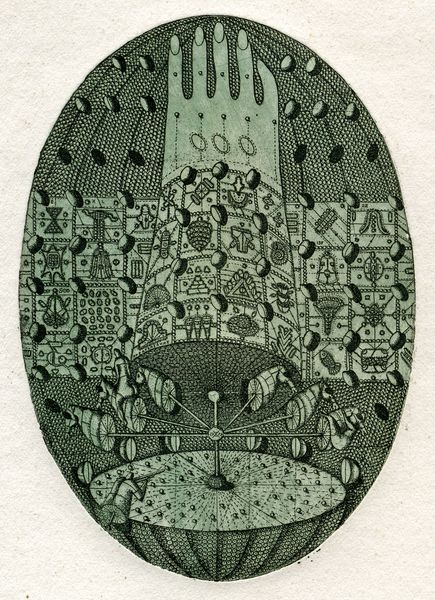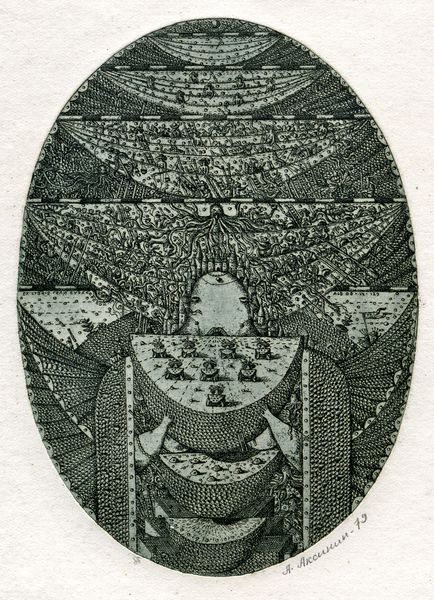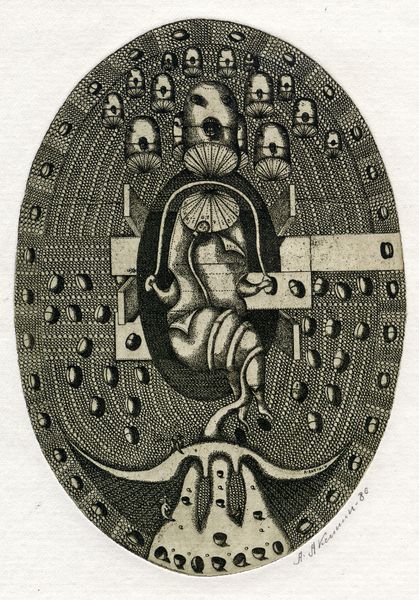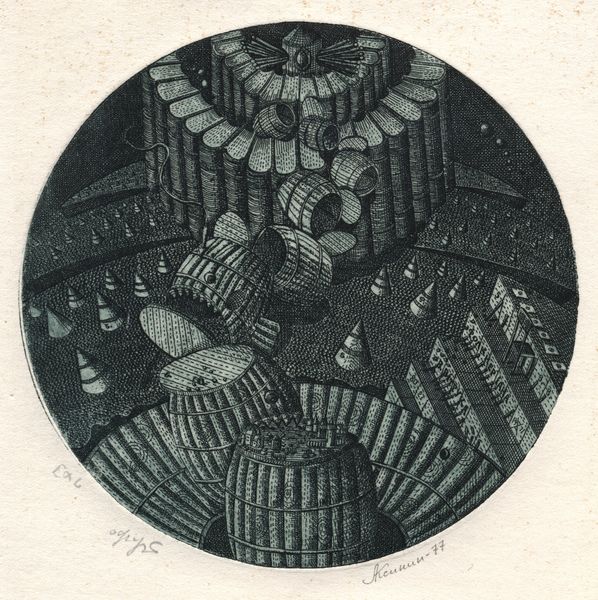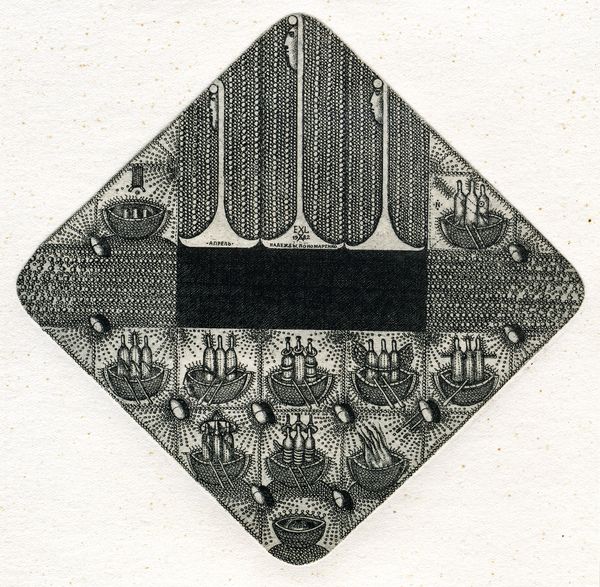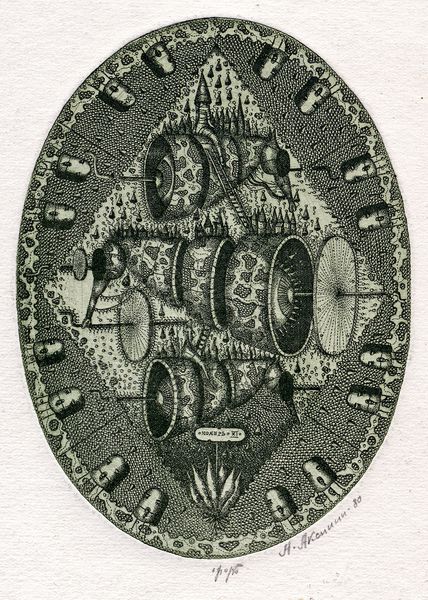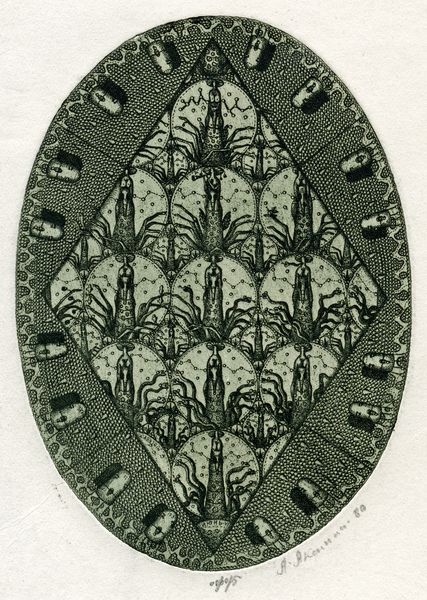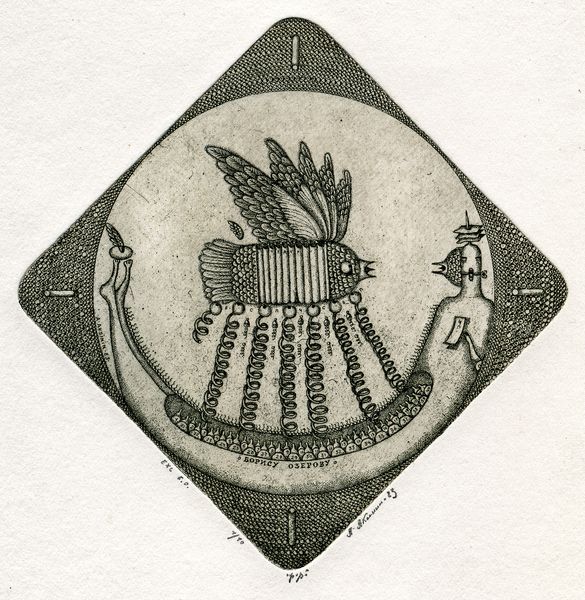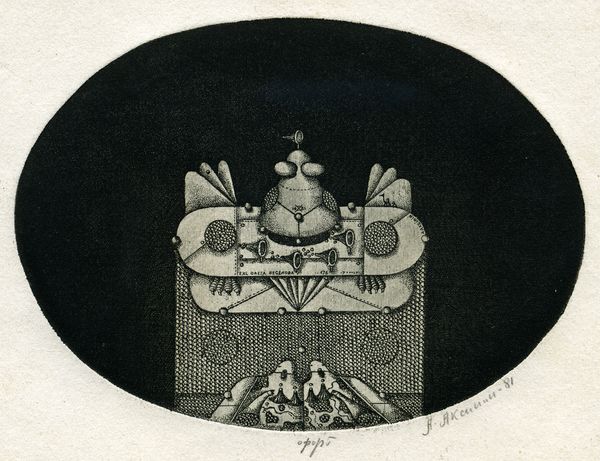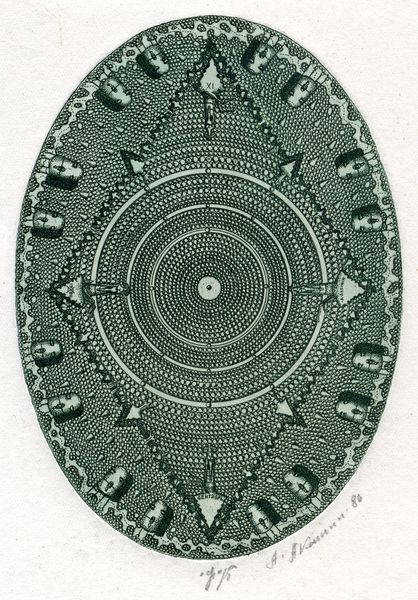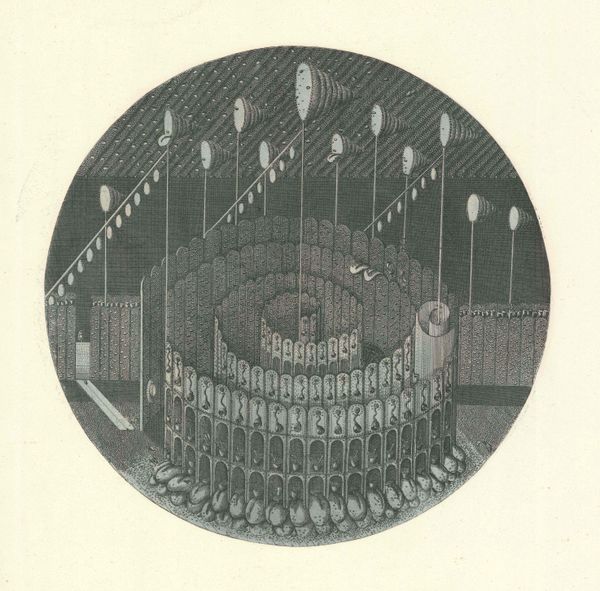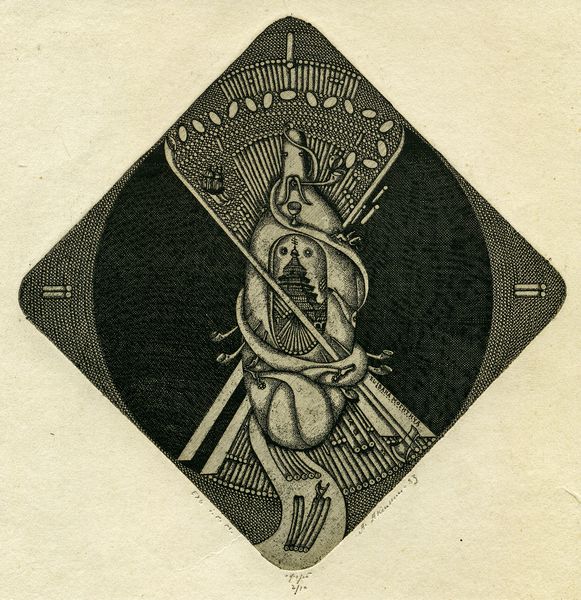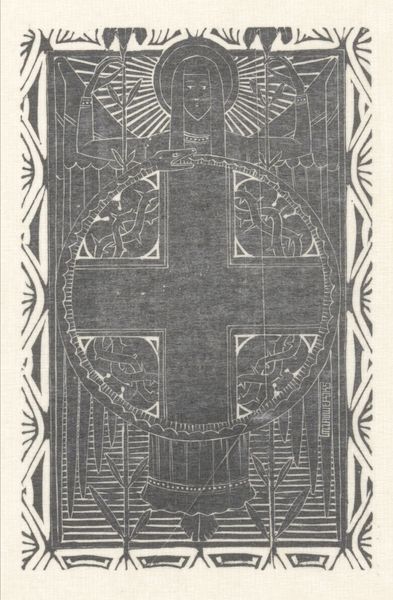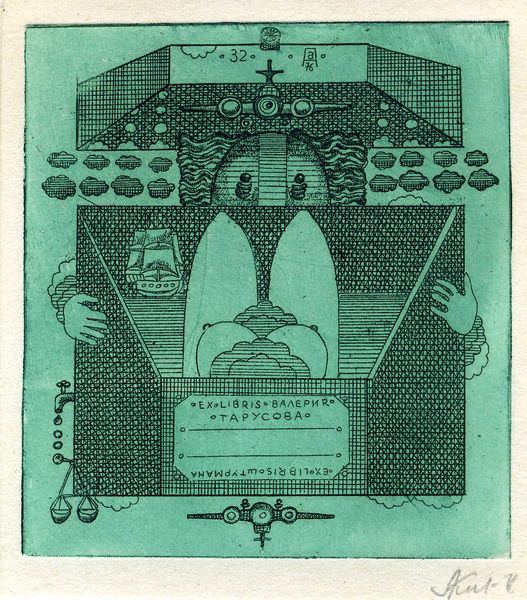
graphic-art, print, intaglio, engraving
#
graphic-art
# print
#
intaglio
#
old engraving style
#
figuration
#
geometric
#
line
#
decorative-art
#
engraving
#
miniature
#
intricate and detailed
Copyright: Oleksandr Aksinin,Fair Use
Curator: Allow me to introduce Oleksandr Aksinin’s "Exlibris of Ihor Vvedensky," created in 1980. It's an intaglio print, a detailed miniature that demonstrates the artist’s remarkable skill. Editor: My first thought is how…contained it feels. The image itself is oval, yes, but it's the obsessive detail and repetition that really creates that sense of compression. Claustrophobic almost, but fascinating! Curator: Intaglio allows for such exquisite detail. Aksinin was part of a vibrant underground art scene, where graphic art flourished, and this piece showcases his masterful command of line and form. The geometric elements juxtaposed with the figuration create an interesting tension. Editor: Absolutely. The central figure – some sort of stylized automaton, I suppose – seems almost burdened by its own artifice. It's caught within this matrix of birdcages; each holding…an eye? Is that correct? Curator: Indeed. Each cage contains an eye, which could symbolize surveillance or the weight of observation. Aksinin often layered his work with cryptic imagery, inviting multiple interpretations. He played with surreal themes and complex symbolism. Editor: So, these cages enclosing eyes—it's potent stuff. Is it about being observed? Being trapped by one's own perception, even? Curator: It certainly suggests a kind of entrapment. Vvedensky was probably a book collector so this could symbolize the experience of reading and collecting, but maybe with the feeling of being overly controlled or confined by that experience. Editor: And the style—reminiscent of old engravings, it contributes to the feeling that you are not quite sure where to place this work—in our minds, our culture. Are we looking forward or looking back here? Curator: That's an astute observation. Aksinin looked to the past to find inspiration. We're seeing something familiar—exlibris bookplates and intricate engraving style—but his symbolic vocabulary feels thoroughly modern. The detail asks us to look closer but the arrangement feels destabilizing, anxious even. Editor: It’s an artwork that speaks of our obsession with observing, with detail, and the price we pay for that attention. So thought-provoking! Curator: Yes, and the Aksinin invites us to consider where our freedoms lie. It challenges you long after you’ve moved on to the next artwork.
Comments
No comments
Be the first to comment and join the conversation on the ultimate creative platform.
